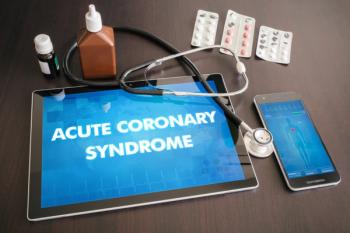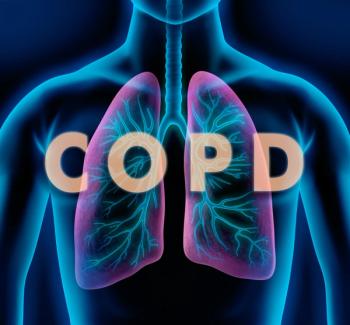
Clinical
Latest News

Latest Videos

CME Content
More News

The panel of experts concludes by exploring the implementation of cardiometabolic risk management learnings and the utilization of telehealth in clinical practice.

Panelists discuss how payer perspectives and access challenges impact the utilization of HER2-directed therapies in NSCLC, examining barriers to treatment initiation and persistence, aligning provider and payer priorities in outcome assessment, the role of real-world evidence in decision-making and policy formation, and strategies for collaborative efforts between stakeholders to balance equitable access with cost management.

Experts examine strategies for coordinating initiatives to enhance cardiometabolic risk management care, focusing on incentivizing providers to deliver high-quality care to patients with cardiometabolic conditions.

A panel of experts explores the objectives and design of the COORDINATE-Diabetes trial, discussing its potential impact on the treatment paradigm for diabetes management.

Panelists discuss how integrating HER2-directed therapies into existing NSCLC decision-making processes presents challenges, focusing on strategies for timely updates as new therapies emerge and the practicalities of HER2- mutation testing, including turnaround times and result interpretation for therapy selection.

The latest therapy approved to treat chronic graft-versus-host disease (GVHD) has a new target different than the other approved therapies. Daniel Wolff, MD, also discusses future research on axatilimab to treat chronic GVHD earlier.

Posters at AMCP Nexus analyzed the burden of flares on patients with atopic dermatitis (AD) and the impact initiating ruxolitinib cream had on use of other therapies.

Higher levels of ambient nitrogen dioxide may be linked to an increased incidence of ovarian cancer, while associations with other pollutants remain inconclusive.

New findings show that undocumented Latinx immigrants, who make up 7% of the US population, face significant challenges in accessing health care due to uninsurance, limited access to care, language barriers, and fears surrounding their immigration status.

Investigators say thrombospondin-4 levels were reduced in patients with symptoms of spinal muscular atrophy (SMA), but levels of the protein increased after therapy.

Early Intervention, Targeted Strategies Needed to Improve Disparities, Survival in Patients With IPF
Two posters presented at the CHEST 2024 annual meeting highlighted the importance of addressing socioeconomic disparities and identifying clinical predictors to improve outcomes and survival rates among patients with idiopathic pulmonary fibrosis (IPF).

The prevalence rates of metabolic dysfunction–associated steatohepatitis (MASH) and metabolic dysfunction–associated steatotic liver disease (MASLD) are likely underestimated using claims data alone.

Toby Maher, MD, PhD, discusses how idiopathic pulmonary fibrosis (IPF) severely affects patients’ quality of life and daily functioning, with a median survival that underscores the disease’s severity, while also highlighting the substantial financial burden and health care resource utilization associated with managing this condition.

Toby Maher, MD, PhD, discusses how idiopathic pulmonary fibrosis (IPF) is a specific form of interstitial lung disease characterized by progressive lung scarring, which leads to significant respiratory impairment and distinct clinical challenges compared with other interstitial lung diseases.

Bipolar disorder is commonly misdiagnosed depending on the features that present, explained Stephanie Hsia, PharmD, MAEd, BCPP, of University of California, San Francisco.

Two genes were shown to be significantly associated with higher prevalence of myasthenia gravis (MG), a relatively rare autoimmune disease.

Using Mendelian randomization analysis, researchers found evidence that 2 small groups of immunophenotypes are linked to either greater or lesser odds of developing pulmonary arterial hypertension (PAH).

Despite advancements in umbilical cord blood transplants, social determinants of health, such as poverty and public insurance, continue to impact outcomes, underscoring the need for equitable access to lifesaving treatments.

Two posters presented at the CHEST 2024 annual meeting highlighted significant disparities in acute coronary syndrome care and outcomes among different racial, ethnic, and gender groups, underscoring the urgent need for targeted interventions to address these inequities.

Because sickle cell disease isn’t as progressive a disease as others that have gene therapies available, there isn’t as much urgency to start on these expensive therapies, said Kevin Niehoff, PharmD, BCMAS, associate director, Market and Financial Insights, IPD Analytics.

Two posters compared health care resource utilization (HCRU) and financial burdens of people living with HIV with a non-HIV population and people with HIV who are heavily treated with those have experienced less treatment.

Patients with low-count chronic lymphocytic leukemia phenotype monoclonal B-cell lymphocytosis had a 1.86-fold greater risk of melanoma.

Panelists discuss how health care providers can improve patient education and support for type 2 inflammatory conditions through personalized communication strategies and shared decision-making, while also evaluating the role of emerging biologic therapies in treatment plans based on individual patient factors, disease severity, and biomarker profiles.

The phase 2 PICCOLO trial demonstrated that mirvetuximab soravtansine (Elahere; AbbVie) is effective and tolerable in heavily pre-treated patients with folate receptor alpha-positive (FRα+), platinum-sensitive ovarian cancer.

Two posters at the CHEST 2024 annual meeting revealed that 18% of eligible patients hospitalized with acute exacerbations of chronic obstructive pulmonary disease (AECOPD) participated in post-discharge pulmonary rehabilitation (PR), with ineligibility significantly limiting uptake.



















































